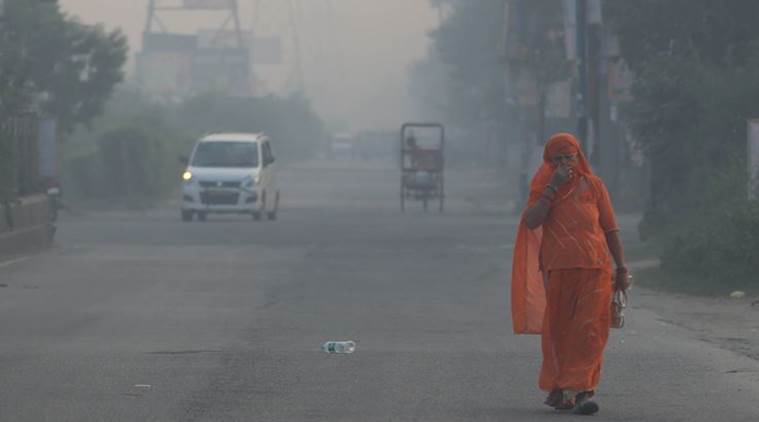 Pollens and biomass burning were also mentioned as reasons for air pollution. (Representational image)
Pollens and biomass burning were also mentioned as reasons for air pollution. (Representational image)
While Chandigarh has been ranked the third cleanest city in the country in the Swachh survey, a study by scientists of the Department of Environment has found that ambient air quality in Chandigarh in 2017 was the worst it had been since 2007 at specific locations. The study, commissioned by the Chandigarh Pollution Control Committee, identified vehicular pollution due to increasing number of vehicles as the main culprit.
From 2007 to 2016, the number of light motor vehicles, basically cars and jeeps, have increased from 1,88,968 in 2007 to 3,75,283 in 2016 which meant that growth was more than 98 per cent. It meant that more than 1,552 cars and jeeps were being registered every month.
The number of two-wheelers increased 4,70,882 in 2007 to 6,95,227 in 2016 — a growth of 47 per cent — meaning more than 1,869 two-wheelers were registered every month. The report said vehicular congestions were causing “road dust re-suspension”. “Vehicles affect the concentration of ambient air-borne particles through exhaust air emissions but particles are also formed in the mechanical processes in the tyre-road interface, brakes and engine,” it said.
The study said particles deposited on or in the vicinity of the road may be re-entrained or resuspended into air through vehicle-induced turbulence, shearing stress of tyres and high windspeed. The common used term for these particles was ‘road dust’, it further stated.
Pollens and biomass burning were also mentioned as reasons for air pollution. “Fallen leaves, which are unattended, ultimately dried and converted into particulate matter after they crush under the vehicles or feet of the pedestrians,” it was said.
A senior official said that stubble burning in the autumn season in Punjab and Haryana also leaves Chandigarh’s air polluted. “Air knows no boundaries,” he said. The study ruled out industries in Chandigarh as a factor as there are a few polluting units.
Air quality worsened particularly in winters, crossed the 10-year mark at some places, Chandigarh still in 94 non-attainment cities. Even as the permissible limit of PM 10 is 60 microgram per cubic meter, in Sector 17, the average level in 2017 was 101 microgram per cubic meter, the highest in 10 years.
At monitoring locations at PEC and IMTECH also, last year saw a 10-year high of PM 10, with 99 microgram per cubic meter and 113 microgram per cubic meter, respectively. The PM10 in the residential area of Kaimbwala saw a steep increase in five years with PM10 being 113 microgram per cubic meter.
Air quality is monitored at five places in the city: commercial area Sector 17, Industrial Area, Punjab Engineering College, IMTECH, Sector 39, and Kaimbwala village.
According to the analysis, the RSPM during winters reached up to 180 microgram per cubic meter in 2017.
Chandigarh continues to remain in “non-attainment cities” as stated by the Central Pollution Control Board – cities where air quality index is poor.
The study has recommended that water fountains be introduced at major traffic intersections, wherever feasible.
An action plan to check fuel adulteration and random monitoring of fuel quality data along with steps to promote battery operated vehicles has also been suggested. For control over the emissions from industrial units, the study suggested strict action against the non complying industrial units.